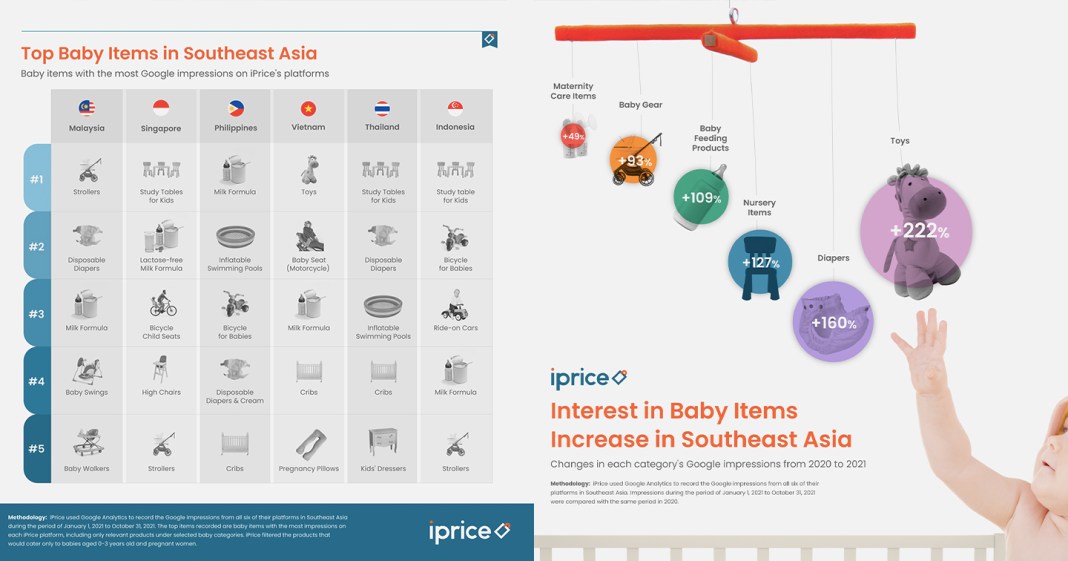According to the United Nations《According to the 2019 World Population Outlook, Asia is the most populous region in the world. However, some countries in Southeast Asia seem to have been working hard to solve the problem of overpopulation.
In recent years, the birth rate in several Southeast Asian countries has decreased faster than expected.For example, in the Philippines,The total number of registered births in 2020 is at its lowest level since 1986. At the same time, Malaysia faces the same fate, with its fertility rate at its lowest level in 40 years. Similar trends can also be seen in Singapore and Thailand.
Despite the decline in birth rates in several Southeast Asian countries, Southeast Asian people's interest in baby products is on the rise.
Data shows that online e-commerce aggregation websitesThe Google exposure of baby products on iPrice's six Southeast Asian platforms increased by 127%.The toy category seems to be the most popular, with increased exposure222%, followed by diapers (160%) and baby care products (127%).

Filipino parents may be forced to shop online to meet the needs of their babies, as the pandemic has greatly affected their outdoor activities.IPrice found that items such as inflatable swimming pools and baby bicycles on its Philippine website have the highest exposure on Google.
In addition to these, in the Philippines and other Southeast Asian countries, diapers and milk powder are also highly exposed on Google. Filipinos' interest in these items has increased146%, but Singapore and Thailand have the highest growth rates in interest in baby products, soaring by 184% and 180% respectively.
The only country with no significant difference in interest is Malaysia, where Google's display frequency only increased in all observed product categories8%. Their interest in baby products, maternity care products, and baby feeding products has actually decreased by an average of 13%.
Given all the challenges faced by Southeast Asians during the pandemic, apart from potential financial uncertainty, having children now may be even more challenging. But as the epidemic does not seem to disappear soon, many people's lives must continue.